Team Building Tools
Use assessments to build a stronger team by discovering your culture fit and alignment. Improve communication, trust and team dynamic!
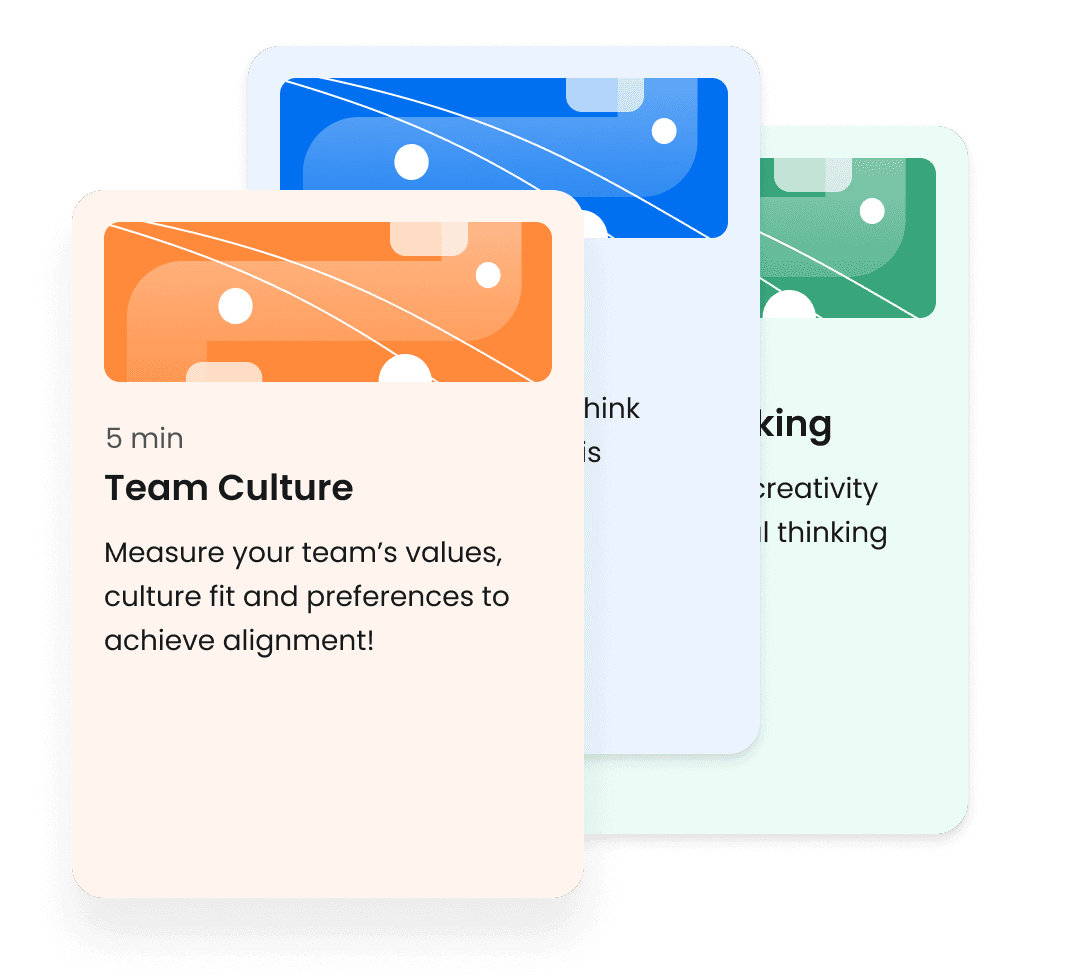
Culture eats strategy for breakfast
Assessments for you and your team
Free Personality assessment
A free personality assessment test measures personality traits such as extroversion, agreeableness, conscientiousness, neuroticism, and openness. It helps individuals gain insight into their personality and behaviors, and identify potential strengths and weaknesses.
Emotional Intelligence test
An emotional intelligence test measures an individual's ability to understand and manage their emotions and the emotions of others. It includes skills such as empathy, self-awareness, self-regulation, motivation, and social skills.
DISC assessment
The DISC assessment measures an individual's behavioral style based on 4 dimensions: dominance, influence, steadiness, and conscientiousness. It helps you understand youe natural tendencies, communication style, and preferred work environment, and identify ways to improve your collaboration with others.
BFAS 100-item assessment
The Big Five BFAS 100-item likert test is a widely used personality assessment that measures the five main personality traits: openness, conscientiousness, extraversion, agreeableness, and neuroticism. It involves a series of statements that an individual rates on a scale, revealing their personality traits.
Jung Personality test
The Jung Personality Test is a psychometric test that measures personality traits according to Carl Jung's theory of personality types. It assesses an individual's cognitive functions and personality preferences to reveal insights into their personality type and behaviors.
360 degree assessment
The 360-degree feedback assessment evaluates an individual's job performance from multiple perspectives eg. manager’s, peers, direct reports, stakeholders. It provides feedback on communication skills, leadership, teamwork, problem-solving, and more, and can help identify areas for improvement.
Team building ideas
Use the Big Five personality test to engage your team
Trait discussions
Divide the team into groups based on their highest-scoring trait. Have each group discuss what their trait means to them and how it affects their work style.
Personality bingo
Create bingo cards with different traits from the Big Five. Have team members go around and ask each other questions related to each trait until they find someone who matches each trait on their card.
Strengths mapping
Have each team member take the Big Five assessment and map out their strengths based on their results. Then, have them share their strengths with the team and discuss how they can use them to benefit the team.
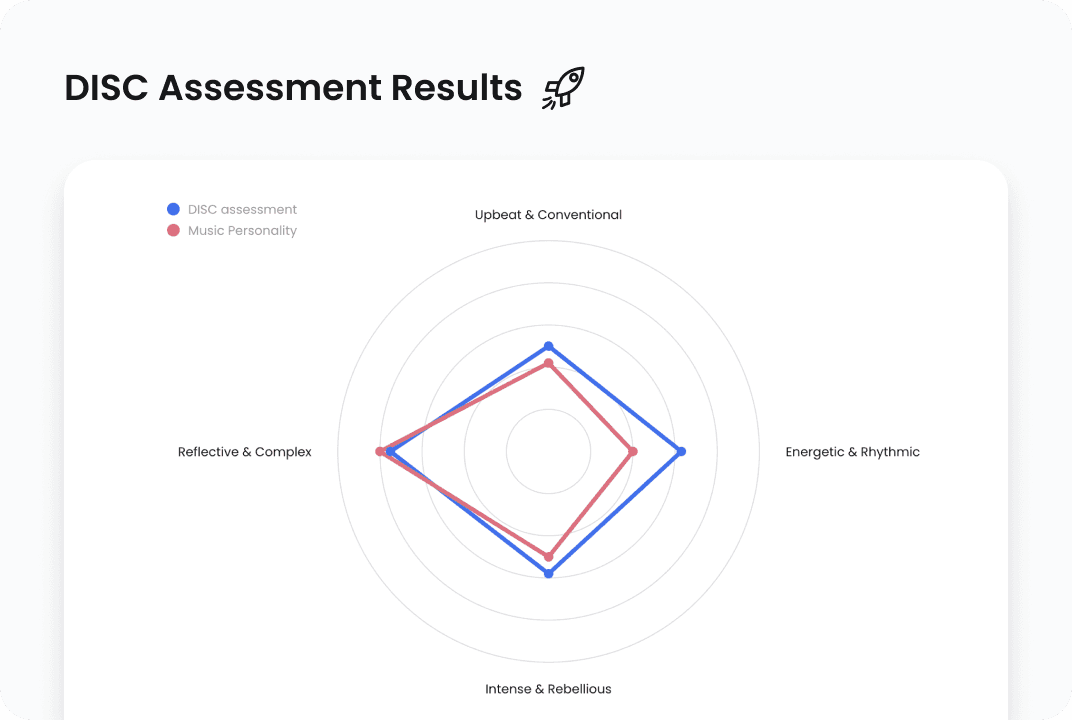
DISC assessment team building exercises
Use DISC to improve team communication and collaboration based on each style:
- Style discussions: divide the team into groups based on their dominant style. Have each group discuss how their style affects their communication and collaboration with others.
- Role-playing exercises: role-play scenarios that involve working with people with different styles. For example, have someone with a dominant style work with someone with a conscientious style.
- Strengths mapping: take the DISC assessment and map out each’s strengths based on their results. Then, have them share their strengths with the team and discuss how they can use them to benefit the team.
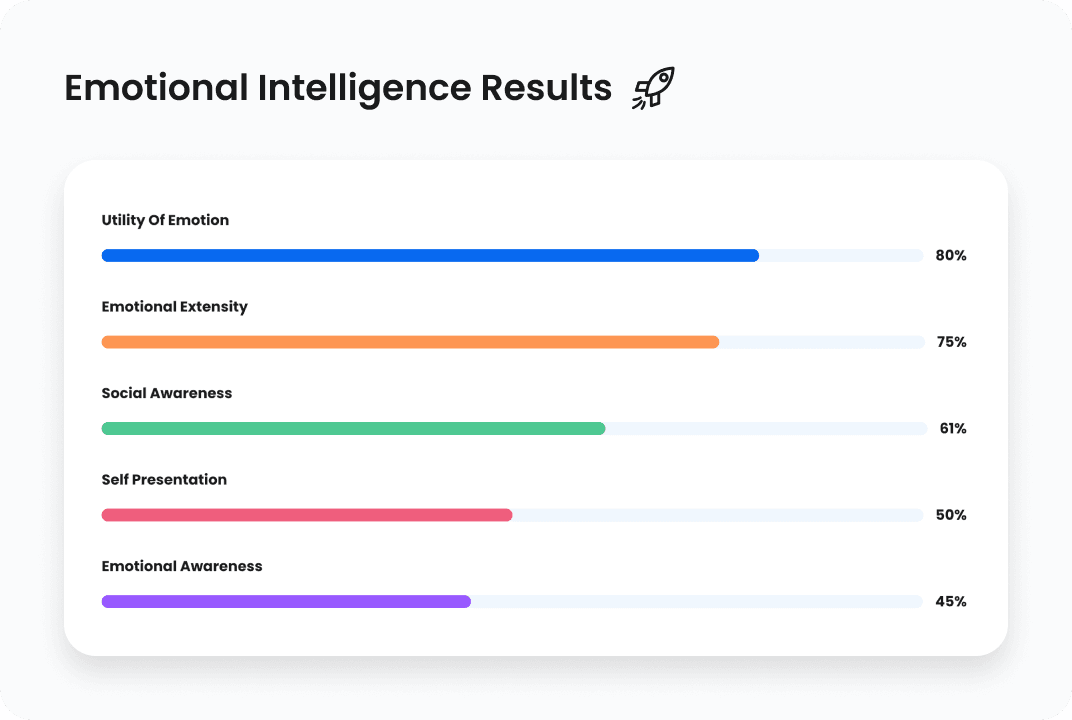
EQ team building activities can be fun and eye-opening:
EQ team building activities can be fun and eye-opening:
- Emotional intelligence quiz: take our quiz test that helps identify their emotional intelligence strengths and weaknesses. Then, have them share their results with the team and discuss how they can improve.
- Empathy exercises: have team members practice empathy by putting themselves in someone else's shoes, eg. the customer’s or a colleagues, who are struggling with something.
- Emotional check-ins: encourage team members to check in with each other regularly about their emotional state during 1:1s. This can help everyone feel more connected.
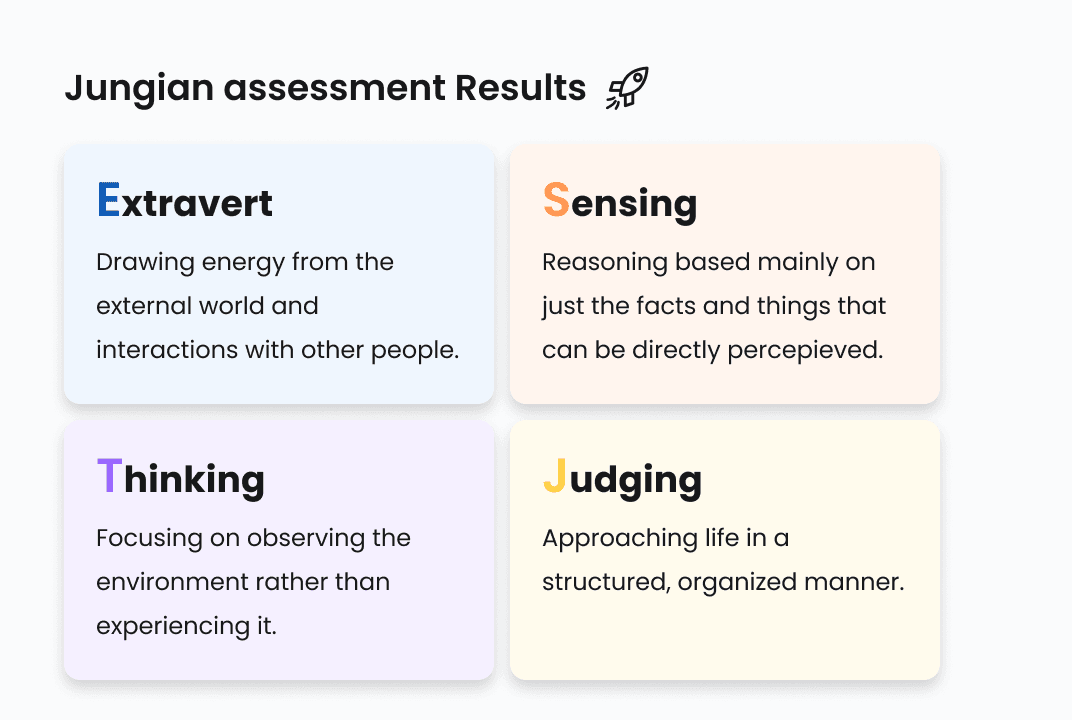
How the Jung test works as a team-building tool
The Jungian assessment can be used for team building activities like these:
- Personality type discussions: divide into groups based on their personality type. Have each group discuss what their type means to them and affects work.
- Role-playing exercises: role-play scenarios that involve working with people with different personality types. For example, have introverts work with someone very extroverted.
- Strengths mapping: take the Jungian assessment and map out strengths. Then, have team members share their strengths with the team and discuss how they can use them to benefit the team.
Measure team culture
Use the best online team builder to measure your team’s cultural fit and values as a whole and in a privacy-oriented way. Use it for candidate assessment testing for building the best team possible, and for comparing team and individual results.
Workplace culture assessment
Team culture assessment
Cope inventory
This is a stress resilience assessment. Our Cope inventory is a coping skills assessment that measures an individual's coping strategies and techniques in response to stress and difficult situations. It evaluates factors such as problem-solving, positive thinking, social support, and emotion-focused coping.
Cultural assessment
Inspired by Hofstede’s methodology, our cultural assessment measures an individual's cultural preferences, including their ability to work effectively with people from diverse backgrounds, in order to help individuals understand and navigate cultural differences in the workplace.
Work Values test
Our work values test measures an individual's core values and beliefs related to work, including factors such as job security, work-life balance, financial reward, and social impact. It helps you identify your top work values, align your career goals, and make informed decisions.
Values Assessment
Gyfted’s values assessment measures your personal values and beliefs, including factors such as honesty, respect, fairness, and social responsibility. It helps you identify your core values, align your personal and professional goals, and make informed decisions that are consistent with your values.
Communication Styles
Our communication styles assessment measures your preferred approach to communication, including verbal and nonverbal communication styles, listening skills, conflict resolution and how direct or indirect you are. It helps individuals understand their communication strengths and weaknesses to improve.
Conflict Test
Sign up for an account with Gyfted to get access. How you handle conflict is crucial in determining what sorts of disagreements, drama and ways of resolving them - methods like 1:1 meetings, team discussions, workshops, mediation and so forth, will help your interpersonal relationships.
Team building activities
Use culture fit tests to compare your team and individual results
Culture discussions
Discuss what the company culture means to them and how it affects their work style. Encourage them to share stories about how they've seen the company culture in action.
Values mapping
You have a ranking of the team’s and company’s values using Gyfted’s team culture assessment. Then, have team members share their individual rankings with the team and discuss how they can uphold these values in their work.
Team norms
Work together to create a list of norms that people want to uphold in their work. Make sure these are realistic and not wishful thinking.
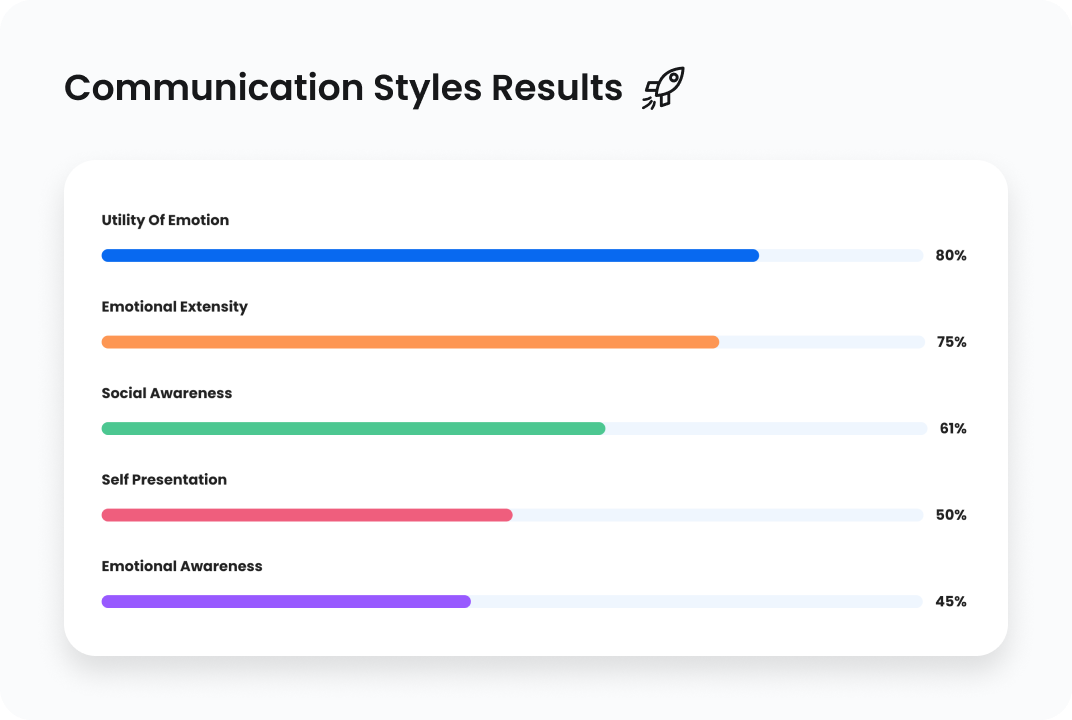
Try these communication team building activities
Our Communication Styles assessment helps you understand how people communicate and prefer to receive communication
- Communication style quiz: use Gyfted’s quiz to identify each person’s style. Then, have people share their results with the team and discuss how they can work better with one another.
- Role-playing exercises: conduct role-play scenarios that involve different communication styles. For example, have someone with a more direct communication style work with someone with a more indirect communication style, and have others watch and comment
- Feedback exercises: give each other feedback on communication. Encourage team members to be specific about what they appreciate and what they find problematic, then figure out how to resolve this..
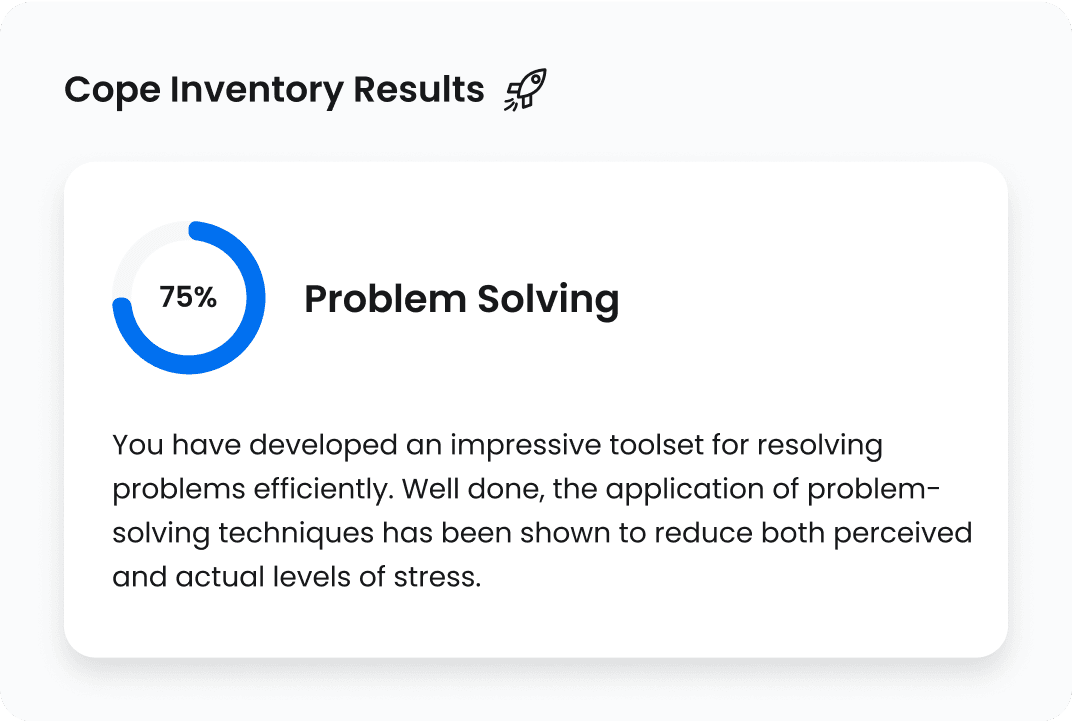
Team exercises for stress management and coping with change
Gyfted’s Coping test measures how people deal with stress and what their coping mechanisms are like:
- Stress resilience quiz: have everyone take the coping quiz that helps them identify their coping mechanisms for dealing with stress. Then, have them share their results with the team and discuss how they can support each other during stressful moments.
- Stress management workshop: Bring in an expert to lead a workshop on stress management. Have the team work together to develop a plan for how they can support each other during stressful times.
- Self-care challenge: Encourage team members to take care of themselves by setting a self-care challenge. For example, they might commit to doing yoga every morning or taking a walk during their lunch break.
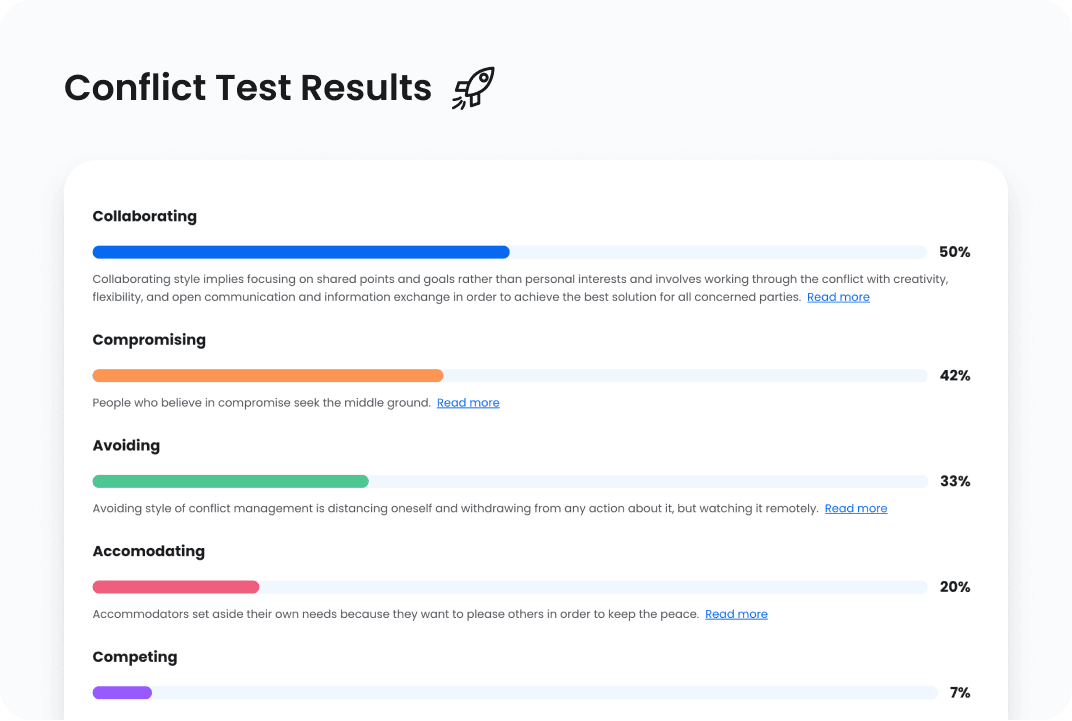
Our Conflict test measures how you deal with conflict and what your resolution style is
Team conflict resolution activities can help you develop more resilient and high performing teams:
- Conflict resolution quiz: use our test to identify each person’s conflict resolution style. Then, have people share their results with the team and discuss how they can adapt their approach to work better with others.
- Role-playing exercises: Have team members role-play scenarios that involve different conflict resolution styles. For example, have someone with a more competitive conflict resolution style work with someone with a more collaborative conflict resolution style.
- Conflict resolution workshop: you can bring in an expert to lead a workshop on conflict resolution. Have the team work together to develop a conflict resolution plan that everyone can agree on, if this is a problem.
Fun virtual team building activities
Have your team members compare themselves to fictional characters. Sit down and look at these comparisons and laugh! Which character group is your team most like? The Office? Silicon Valley? Star Trek?
Universities, edtech and tech companies we stem from
Virtual team building activities
People and culture
Motivation assessment
Gyfted’s motivation assessment measures your level of motivation and the factors that drive your behaviors and performance. It evaluates factors such as intrinsic and extrinsic motivation, goal setting, self-efficacy, and self-determination to help you understand your motivation levels.
Work Styles Assessment
A work style assessment measures an individual's preferred approach to work, including their attitudes, behaviors, and working preferences. It evaluates factors such as communication style, decision-making process, leadership style, and problem-solving skills to help individuals understand their work style and improve their performance.
Build an effective team using self assessments
Build a people focused organization and improve your team’s effectiveness by combining our free self assessments with Gyfted’s team culture assessment. Our business model is unique and we have a developed a very powerful and free set of tools to improve your team dynamics, individual self-awareness, as well as cofounder relationship.
Virtual team building tools
Team building software
All of the following assessment tools explore an individual's personality thoroughly, although the Big5 is the gold standard among personality assessments. And what’s key is that are all available for free here:
Frequently asked questions
How to improve team performance?
One of the key ways to improve team performance is to leverage self assessments, personality tests, cultural fit quizzes to make everybody more self-aware on the team of what their strengths and limitations are. Being aware of how each one of us on the team communicates, deals with stress, and tends to behave will be eye-opening for many. As a next step, pursing team activities and exercises that help raise interpersonal awareness on these things is a great way of learning, building trust, raising awareness and empathy, and working out differences for the betterment of team dynamics.
Another way to improve is to assign ownership and accountability correctly across teams and individual team leaders. You should also think about how teams are formed, which depends on the organizational context, stage of the company, management style, and goals like these.
- Organizational hierarchy of a company or organization. Hierarchy determines team organization, and project teams might be assembled from different departments.
- Skills and expertise needed for a particular task.
- Teams can be formed based on shared interests and passions. For instance, a group of employees who are interested in climate change might form a climate team to work on initiatives to reduce the company's environmental footprint.
- Teams can also be formed through volunteerism, eg. where a group of employees might volunteer to work on a nonproft project.
How to build a team culture?
Building a team culture takes time and effort, but it's crucial for the long run:
- Define your team's values. These might include things like honesty, collaboration, and accountability. Make sure that everyone on the team is clear on these values and that they are reinforced regularly. Use Gyfted’s team values assessments in this!
- Communicate regularly via regular team meetings, 1:1 check-ins and informal chats.
- Celebrate successes to build morale and reinforce your team's culture. It’s fin and exciting when your team achieves a goal or milestone! That’s the perfect time to acknowledge their hard work and celebrate together.
- Encourage your team members to give feedback on how the team is working and how it can improve. This can help to identify areas where the team culture can be strengthened and build a sense of ownership among team members.
- Lead by example: as a leader, it's important to lead by example when it comes to building a strong team culture. Live the values that you have defined for your team and that you are modeling the behavior that you want to see from your team members.
- Create team rituals: team rituals are a great way to build a sense of belonging and reinforce your team's culture. These might include things like team lunches, after-work socials, or team-building activities.
How to build team chemistry? How to build trust in a team?
Building team chemistry is essential for creating an effective team:
- Take the time to get to know your team members on a personal level. This can include things like their interests, hobbies, and backgrounds. The more you know about each other, the easier it will be to work together effectively.
- Encourage open communication so everyone on your team feels comfortable sharing their ideas, opinions, and concerns.
- Foster a positive attitude, which can go a long way in building team chemistry. Encourage your team members to stay positive and focus on solutions rather than problems.
- Build trust, it is essential for building team chemistry. Make sure that everyone on your team feels that they can rely on each other and that they are held accountable.
- Celebrate successes as a team to build team chemistry and reinforce the idea that everyone is working together towards a common goal.
- Foster teamwork by assigning tasks that require collaboration and building a culture of supporting each other's strengths and weaknesses.
How to build an outbound sales team?
- Define your sales strategy: above all your sales playbook, target persona, market segmentation, and sales cadence plus collateral.
- Hire the right people who are driven, hungry, ideally with relevant sales experience, and who are passionate about the industry you are in. Look for people who are self-starters, resilient, and coachable.
- Provide training and resources to your sales team. Sales enablement is key for building high-performance sales organizations. This includes training on your product or service, your sales process, playbook, your CRM eg. Affinity, Salesforce, HubSpot.
- Set clear goals for your outbound sales team and track performance in the pipeline and activity. This should include targets for the number of calls made, meetings booked, and deals closed, besides sheer dollar numbers.
- Foster a culture of collaboration and team spirit.
- Emphasize customer success and customer orientation.
How to build a software development team?
- Define your product tech needs and scope.
- Hire technically excellent and experienced people in software development and who are passionate about the industry you are in or what you’re doing. Have a technical person look for people who have expertise in the specific technologies and platforms you'll be using. Take into account not only skills, but passion, motivation, attitudes, and personality.
- Provide your software development team with the tools they need to be successful like ClickUp, GitHub, GitLab, PlayerZero, MixPanel, GCP or AWS, and so forth.
- Set clear goals for the product roadmap, sprints, and standups. Track tasks.
- Foster a culture of collaboration.
- Emphasize high quality code, high quality UX, and testing it thoroughly.
How to build a customer experience team?
- Define your customer experience goals. This includes identifying your target customer and the type of experience you want to provide.
- Hire people who are passionate about creating positive customer experiences. Look for people who are empathetic, patient, and good communicators.
- Set clear goals and expectations and hold them accountable. This might include setting targets for response times, customer satisfaction ratings, and retention rates.
- Foster a culture of empathy to encourage your team members to put themselves in the shoes of your customers and to go above and beyond to create positive experiences.
- Use customer feedback and NPS to improve your customer experience team.
What are the 4 types of team building activities?
There are 4 types of team development activities:
- Communication activities: communication activities focus on improving communication among team members. These activities might include role-playing exercises, group discussions, and team-building games that require effective communication.
- Problem-solving activities: pproblem-solving activities focus on improving problem-solving skills among team members. These activities might include brainstorming sessions, puzzles, and other activities that require creative thinking and problem-solving skills.
- Trust-building activities: trust-building activities focus on building trust and improving relationships among team members. These activities might include team-building games, trust exercises, and activities that require teamwork and collaboration.
- Fun activities: fun activities are designed to improve morale and build team spirit. These activities might include team outings, social events, and other activities that are designed to be enjoyable and promote team bonding.
Why is team building important?
Team building is important because it:
- Improves communication between team members, helping them to understand each other's strengths, weaknesses, and work styles. This can lead to better collaboration and fewer misunderstandings.
- Boosts morale and helps team members feel more engaged and invested in their work. This can lead to increased productivity and a more positive work environment.
- Encourages creativity and innovation by providing opportunities for team members to think outside the box and come up with new ideas.
- Builds trust among team members. When team members trust each other, they are more likely to collaborate and work together effectively.
How much does a 360 assessment cost?
Gyfted’s 360 assessment for recruiting purposes is available for free, as well as our 360 feedback assessment. However, on the market the cost of a 360 assessment can vary depending on several factors, like these:
- Online assessments are generally less expensive than in-person assessments and can range from around $40 to $300 per participant.
- In-person assessments are typically more expensive due to the cost of facilitation and can range from $200 to $1,500 per participant.
- If you require a high level of customization, such as a tailored assessment or customized report, the costs may be even higher. However, rhe cost per participant can decrease as the number of participants increases, as providers may offer volume discounts.
What is the basis for most team conflict?
The basis for most team conflict is usually a difference in goals, values, or work styles, like:
- differences in goals: when team members have different goals, they may work towards different objectives and have competing priorities. This can lead to conflict if they feel that their goals are not being prioritized or if they perceive that others are not pulling their weight.
- differences in values: when team members have different values, they may have different ideas about what is important or what constitutes success. This can lead to conflict if they feel that their values are not being respected or if they perceive that others are not working in accordance with those values.
- differences in work styles: when team members have different work styles, they may approach tasks differently, which can lead to conflict if they feel that others are not pulling their weight or if they perceive that others are not working in a way that is compatible with their own work style.
Teams must learn to recognize that differences are a natural part of working together and can actually lead to better outcomes when managed effectively. By understanding and respecting each other's goals, values, and work styles, teams can work together more effectively and minimize conflict. Communication, collaboration, and compromise are key to managing team conflict and creating a positive and productive work environment.
How to resolve conflict in a team?
Resolving conflict in a team is is hard but necessary, you can do it this way:
- Acknowledge the conflict: the first step in resolving conflict is to acknowledge that it exists. This can be done by bringing it up in a team meeting or by having a one-on-one conversation with the team members involved.
- Listen actively: listen actively to both sides of the conflict. Encourage each team member to share their perspective and feelings without interruption, to ensure that both sides feel heard and understood.
- Identify the underlying issues that are causing the conflict. This might include differences in goals, values, or work styles. By understanding the underlying issues, you can work towards finding a solution that addresses the root cause of the conflict.
- Brainstorm solutions to the conflict. Encourage all team members to contribute ideas and work towards finding a solution that is acceptable to everyone.
- Choose a solution that is acceptable to everyone involved in the conflict. This might require compromise or a creative solution that meets everyone's needs.
How can a team have healthy conflict? What are some common team resources?
- Encourage team members to communicate openly and honestly with each other. This can help to ensure that everyone's ideas and opinions are heard and considered.
- Focus on issues, not personalities: when conflicts arise, focus on the issues at hand rather than personalities. This can help to ensure that conflicts are not personal and that team members can work together effectively.
- Be respectful of each other's opinions and ideas, even if you disagree with them.
- Set rules for how conflicts should be addressed within the team.
- Use constructive feedback to address conflicts and provide guidance on how to improve, to ensure that conflict is addressed in a way that is positive and productive.
Regarding resources that help teams have healthy conflict you’re in the perfect place. Check out our virtual team building tools self assessments, group assessments, fun team activities and team exercises.
How to use personality tests in team building?
Personality tests are great for team building exercises because they can help team members better understand themselves and each other, hence promote collaboration, communication, and trust among team members. Try these ideas:
- Pick what tests you like or need from among those: Jungian (similar to MBTI), the Big Five personality assessment, DISC assessment. You can also do some research to find the test that's best suited for your team's goals and personality types.
- Share results in a safe environment. You might consider holding a group session where team members can discuss their results and what they mean in a non-judgmental atmosphere so everyone feels at ease sharing and discussing this.
- Use test results to improve communication, especially with the communication styles quiz. One of the primary benefits of personality tests is that they can help team members understand each other's communication styles.
- Encourage empathy and understanding. By learning about each other's strengths, weaknesses, and personality traits, team members can appreciate each other's unique contributions to the team -that’s what builds real team diversity and productivity.